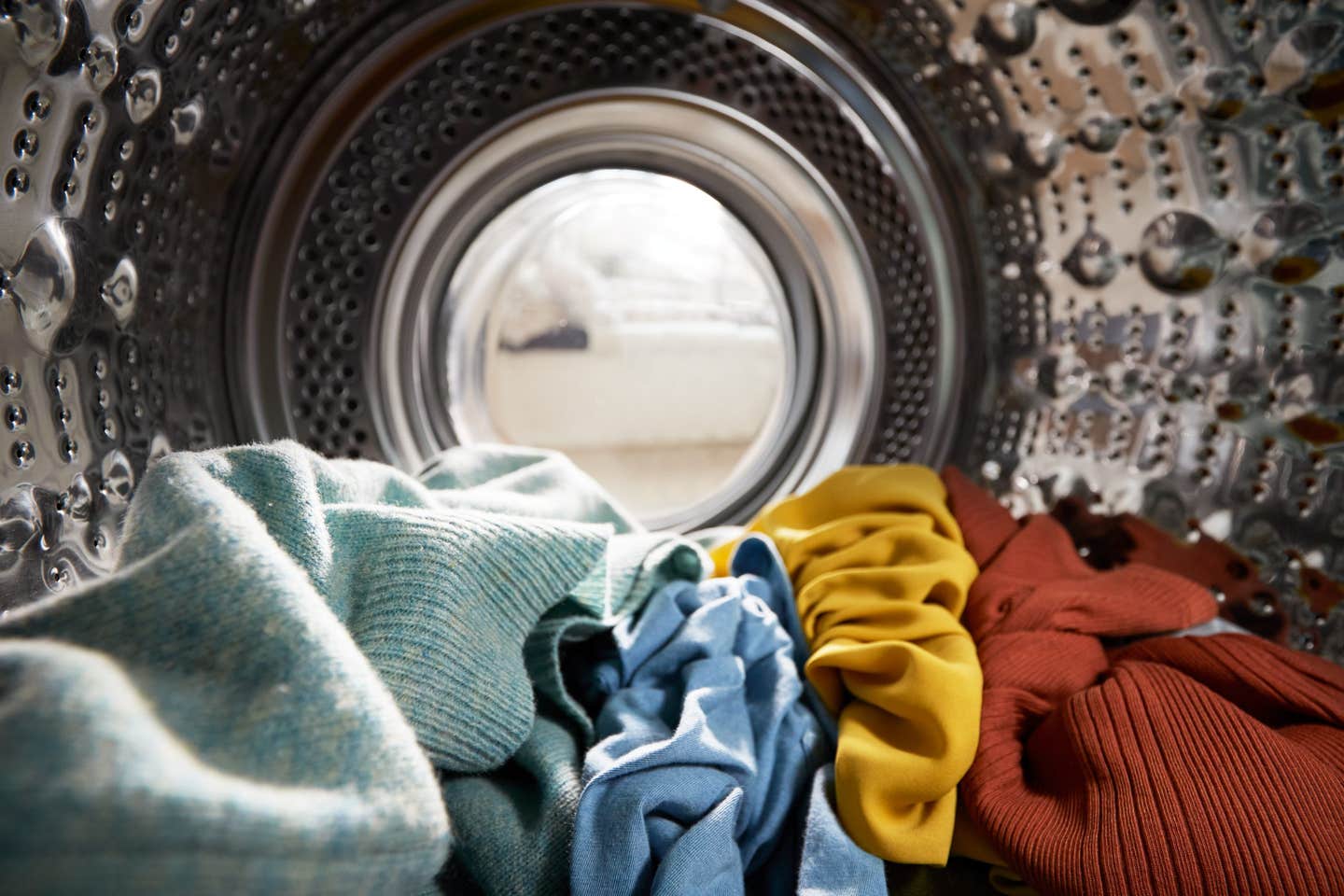Novel fabric coating significantly reduces microplastic pollution from washing clothes
In a world swamped by fast fashion – an industry that produces a high-volume of cheaply made clothing at an immense cost to the environment.

[Feb.5, 2023: Safa Jinje, University of Toronto]
Researchers have designed a solution to reduce the amount of microplastic fibres shed when washing synthetic fabrics. (CREDIT: iStock Images)
A team of researchers at the University of Toronto have designed a solution to reduce the amount of microplastic fibres shed when washing synthetic fabrics.
In a world swamped by fast fashion – an industry that produces a high-volume of cheaply made clothing at an immense cost to the environment – more than two thirds of clothes are now made of synthetic fabrics, such as nylon, polyester, acrylic and rayon.
When clothes made from synthetic fabrics go in the washing machine, the friction caused by cleaning cycles produces tiny tears that cause microplastic fibres – measuring less than 500 micrometres in length – to break off and make their way down laundry drains to enter waterways, where the particles can be difficult to remove and take decades or more to fully break down.
But U of T researchers say the slippery solution to this problem could already be in your cabinet: a silicon-based organic polymer coating found in many household products.
Kevin Golovin, an assistant professor of mechanical and industrial engineering in the Faculty of Applied Science & Engineering, and his team have created a two-layer coating made of polydimethylsiloxane (PDMS) brushes, which are linear, single polymer chains grown from a substrate to form a nanoscale surface layer.
Related Stories
Experiments conducted by the team showed that this coating can significantly reduce microfibre shedding of nylon clothing after repeated laundering, according to findings published in Nature Sustainability.
“My lab has been working with this coating on other surfaces, including glass and metals, for a few years now,” says Golovin. “One of the properties we have observed is that it is quite slippery, meaning it has very low friction.”
PDMS is used in shampoos to make hair shiny and slippery, and is also used as a food additive in oils to prevent liquids from foaming when bottled.
Sudip Kumar Lahiri, a post-doctoral researcher in Golovin’s lab and lead author of the study, reasoned that reducing the friction that occurs during wash cycles with a PDMS-based fabric finish could prevent fibres from rubbing together and breaking off during laundering.
One of the biggest challenges the researchers faced during their study was ensuring the PDMS brushes stayed on the fabric. Lahiri, who is a textile engineer by trade, developed a molecular primer based on his understanding of fabric dyes.
Lahiri figured the type of bonding responsible for keeping dyed apparel colourful after repeated washes would work for the PDMS coating as well.
Neither the primer nor the PDMS brushes work separately to decrease the microplastic-fibre shedding. But together, they created a strong finish that reduced the release of microfibres by more than 90 per cent after nine washes.
“PDMS brushes are environmentally friendly because they are not derived from petroleum like many polymers used today,” says Golovin, who was awarded a Connaught New Researcher award for this work.
“With the addition of Sudip’s primer, our coating is robust enough to remain on the garment and continue to reduce micro-fibre shedding over time.”
Since PDMS is naturally a water-repellent material, the researchers are currently working on making the coating hydrophilic so that coated fabrics will be better able to wick away sweat. The team has also expanded the research to look beyond nylon fabrics, including polyester and synthetic-fabric blends.
Images of uncoated (top left, right) and coated (bottom left, right) nylon-6,6 fabrics after nine washing cycles taken by a scanning electron microscope. (CREDIT: Nature Sustainability)
“Many textiles are made of multiple types of fibres,” says Golovin. “We are working to formulate the correct polymer architecture so that our coating can durably adhere to all of those fibres simultaneously.”
Governments around the world have been looking for ways to minimize the debris that comes from washing synthetic fabrics since it can accumulate in oceans, lakes and rivers, threatening marine life and entering the human food chain through its presence in food and tap water. One example is washing machine filters, which have emerged as a leading fix to stop microplastic fibres from entering waterways. In Ontario, legislative members have introduced a bill that would require filters in new washing machines in the province.
MPF analysis comparing results between various treatment types of garments. (CREDIT: Nature Sustainability)
“And yet, when we look at what governments around the world are doing, there is no trend towards preventing the creation of microplastic fibres in the first place,” says Golovin.
“Our research is pushing in a different direction, where we actually solve the problem rather than putting a Band-Aid on the issue.”
For more science and technology stories check out our New Discoveries section at The Brighter Side of News.
Note: Materials provided above by University of Toronto. Content may be edited for style and length.
Like these kind of feel good stories? Get the Brighter Side of News' newsletter.
Joseph Shavit
Head Science News Writer | Communicating Innovation & Discovery
Based in Los Angeles, Joseph Shavit is an accomplished science journalist, head science news writer and co-founder at The Brighter Side of News, where he translates cutting-edge discoveries into compelling stories for a broad audience. With a strong background spanning science, business, product management, media leadership, and entrepreneurship, Joseph brings a unique perspective to science communication. His expertise allows him to uncover the intersection of technological advancements and market potential, shedding light on how groundbreaking research evolves into transformative products and industries.



